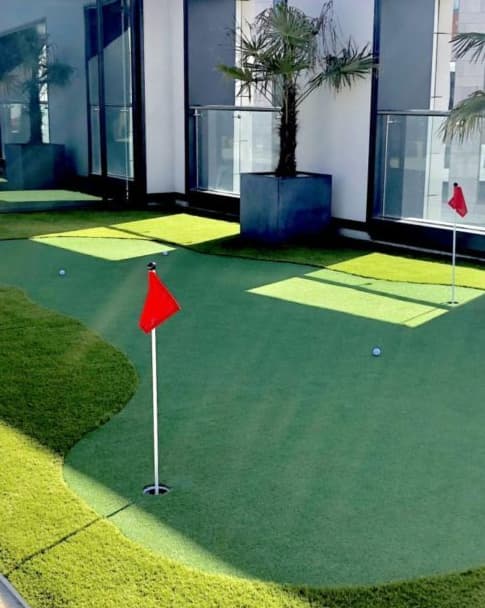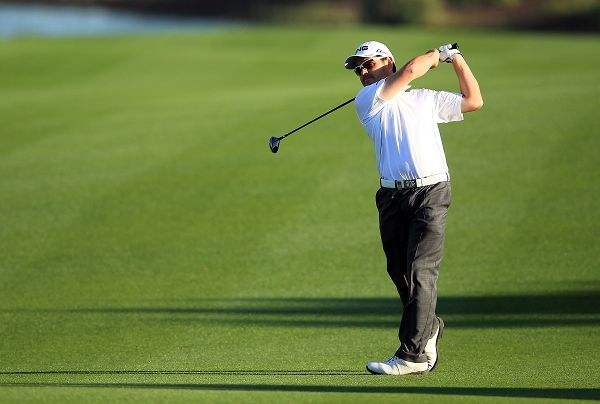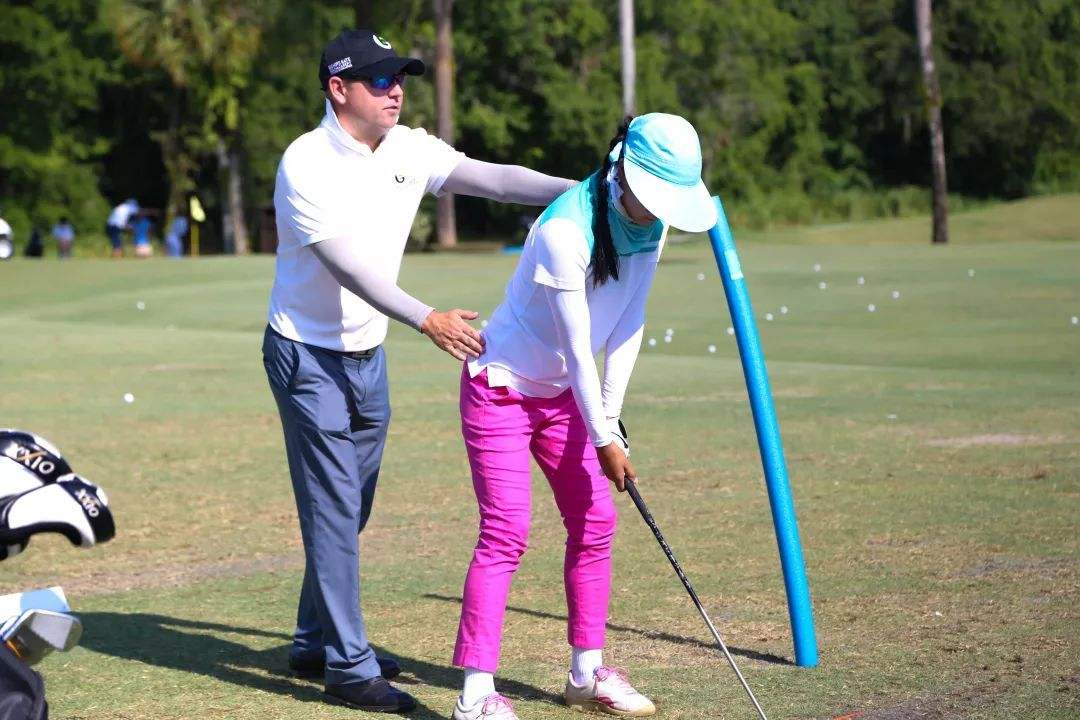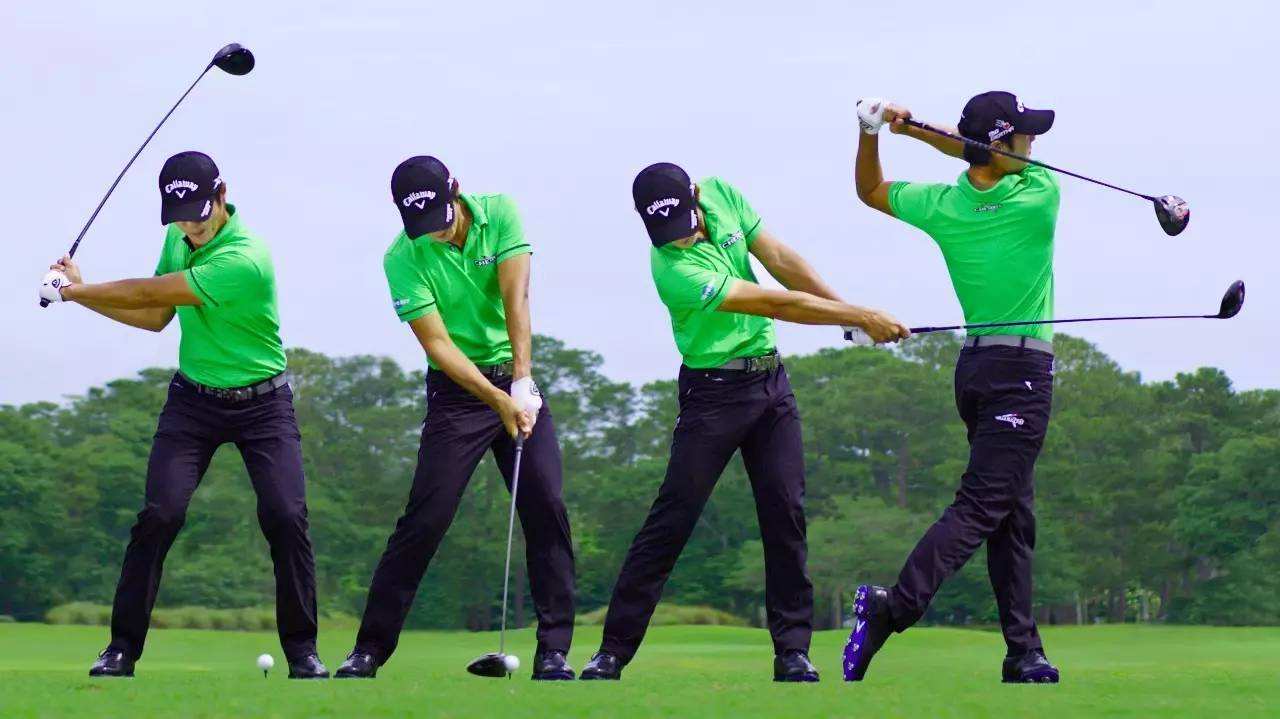
What are the types of golf playing? How to hit the ball?
How to play: Excessive hand tension will affect the speed of the club head during the downswing. So stay relaxed and the grip should be looser.
With a driver, first hold the pole with your left hand. When your right palm covers your left thumb, pay attention to the pressure felt by your fingers. Score the pressure from 1 (total weakness) to 10 (Vulcan-style locking grip).
Your feeling should be 3. Do 5 practice swings, pay attention to keeping the pressure felt by the left thumb, and then hold the ball and hit the ball. Keeping the grip strength constant, your forearm can rotate naturally, turning the face of the club to be perpendicular to the ball when you touch the ball.

If you hold the rod too tightly, the hitting distance will be shortened and the ball will fly to the right side of the target.
How to play: When your club head digs into the turf under the ball, the grooves on the club face cannot give the ball enough spin. If you want to just touch the ball and increase the spin, you can try this training method. Hold the ball so that the ball is slightly higher than the turf, and insert a tee 6 inches in front of the ball so that it is on the target direction line, and the half tee is exposed. Hit the ball with an 8 iron and hit the second tee.
To do this, you need to keep your arms extended and avoid digging. Use this training method to hit 5 balls, then use an 8 iron to make a standard shot and see how quickly the ball will stop.

Study the course of the putt from the back of the hole, and first determine the course of the last two or three feet, during which the ball shifts the most to the left and right. By studying the terrain near the hole, you can more clearly judge the left and right deviation of the putt.
Choose a higher route so that the ball is on this route at the beginning of the roll. The advantage of this is that if the left and right deviation of the putt is greater than you think, you still have a chance to put it into the hole.
The ball is aligned to the front of the station, that is, the left heel. This allows more time for the putting surface to close, and the ball will roll to the left at the beginning, moving toward the higher side of the hole, a bit like an intentional pull shot. The imaginary ball can be close to the higher side of the hole to enter the hole before the putt.
5. Attack the green with a fairway wood
How to play: Attacking the green with a fairway wood requires a sweeping swing to make the club head brush over the top of the blade of grass. This can increase the loft angle and make the ball fly off the turf. During training, you can put the ball bag on the ground so that it is parallel to the target direction line. Put a club in the middle of the bag, make the club perpendicular to the bag, and the top of the handle is directly above the target direction line. Place a ball 12 inches behind the suspended shaft and aim the ball 2 inches behind the left foot. Use your most comfortable fairway wood to make the head pass under the suspended shaft, and don't touch the shaft when you enter the homeopathic action.
6. Hit a sharp low fly ball in the wind
How to play: At this time, you should use a club that is 2 size longer than before facing this distance. When holding the rod, move your hands down and touch the shaft, which makes it easier to control the speed. Your swing trajectory should be flatter than ever, so don't make your hands higher than your shoulders when on the swing and in homeopathic movements. When you touch the ball, turn your chest to the front of the ball and make a sweep to make the ball fly from the ground. These adjustments are made to reduce your swing speed and avoid hitting downwards, which would cause the ball to fly high.

The super slow swing speed, coupled with a relatively flat swing trajectory, will enable you to hit a sharp low fly ball and make a path in the wind.
7. High-flying soft landing over the sand pit
How to play: The most common mistake of this kind of shot is that the shot is too close, which is caused by the lack of clubhead speed. When you do this kind of shot, you know to open the face. But this increases the effective loft angle of the club, and you must increase the swing speed at the same time to ensure that the hitting distance remains the same. In other words, if you want to hit the ball at a distance of 20 yards, compared to the previous 20 yard shots made when the clubface is perpendicular to the ball, your swing power should now be greater.
To make this kind of shot simpler, you can learn the best way to open the face (increase the loft). Don't just open the club face and aim at the right side of the target. In doing so, you will be forced to make a shot that only touches the ball without touching the ground in order to make the ball fly to the target. Instead, first turn the face to open, then lower your hands so that the front edge of the bottom of the club head points toward the target. In doing so, you can increase the loft angle while keeping your swing on the right track. Remember: Don't be afraid of hitting the turf behind the ball when you go down.
8. Special iron half swing
How to play: When the distance between you and the hole is awkward, say 50 yards, the main challenge is to calculate the hitting distance and swing range. Imagine that you are on a rugby field. A line is drawn every 10 yards between the ball and the hole, so that it is easy to accurately judge the distance of the ball. If the hole is at the front of the green, make the ball land on the front edge of the green. If the hole is at the back of the green, make the ball land in the center of the green.

Once you have judged the hitting distance, you have to control the hitting distance by controlling the amplitude of the stroke. The stance is open (see the picture on the right), so that it can restrict the turning movement when on the pole. The key is to reduce the stroke as much as possible (if it is a 50-yard ball, the stroke to hip height), and accelerate the process of touching the ball.
9. Relax and play bunker ball
How to play: Stand in the practice bunker, 10 feet from the edge. Use a bunker instead of a ball and swing to splash sand on the turf. You will soon discover that to do this, your swing must be active and vigorous, so that the club head has a long distance in the sand and shallow entry into the sand. Repeat 10 times, and then place a ball in the bunker, align the ball 1 inch in front of the center of the stand, with your feet parallel to the line of the target direction. The swing must still be active. The club head never directly touches the ball, it touches the ball with sand splashing toward the hole. Your ball will fly out of the bunker towards the green.
10. Long-range putt to bring the ball close to the hole
How to play: Whether it is a 100-foot or 30-foot putt, you can use the following methods to get the ball close to the hole.
1. Forget about the hole. When studying the green, find the highest point on the putting line, the point where the ball is completely affected by gravity and begins to roll toward the hole. Aim the pushing surface at the highest point and take a look at this one last.
2. Swing. Before the game, go to practice on the green, find a few different holes, only use the right hand to hold the stick to practice putting, in order to strengthen the feeling of distance control. Pay attention to how your arms and shots are completely controlled by the weight of the club head. During the shot, your forearm should rotate to a certain extent, and the wrist should be flipped first and then reversed to increase the strength of the shot. You can also use this shot instead of a standard shot on the court.
3. Think of long pushes as avoiding pushes. Don't think about putting into the hole, relax and feel free to feel the movement of the ball and club head. The improvement in your ability to control distance will surprise you as well.